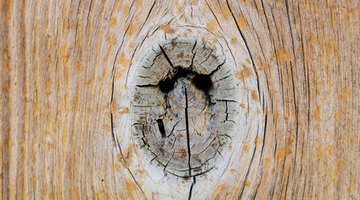The Best Wood Filler for Exterior Siding
Wood can get worn down around your home or business due to exposure to outdoor elements or the added pressure of being used on a frequent basis. These holes and marks can be repaired with a wood filler that help restore the wood to its original consistency and strength.

Finding the best wood filler for the exterior siding of your home or business helps you get your wood back to where it can be frequently used again.
Elmer's
This wood filler can be applied to your damaged wood to fill in holes and other marks. The filler is weather-resistant and contains no solvents, making it suitable for outdoor application -- regardless of weather conditions. Prepare the wood for the filler first by sanding the marked areas lightly with sand paper. Use a putty knife to smooth in the filler. Scrape off any excess filler with the knife. The filler will compress as it dries in the wood -- and the wood can be ready in as little as 15 to 20 minutes if the marks in the wood are minor. Apply multiple filler layers for deeper marks found in the wood.
Fix Solvent
This wood filler can be used to repair the marks in your wood. It can be applied in various ways such as with a spreading tool or sand paper dipped into the can. The filler cannot be used on finished surfaces, so avoid this type of filler if your wood is already covered with a finishing coat.
Miracle Wood
This wood filler differs from other solvent and solid-based fillers on the market, because it is composed of real wood -- it has some of the same properties of the wood it is repairing such as how it dries, withstanding the same weather conditions, not shrinking after application and being capable of receiving stain product. You can size out the material with a wood knife and place it inside the marks of the wood for repair. You can then choose to stain the filler to a color that matches its surrounding wood.
Color Putty
This wood filler is oil-based and comes in many different colors to suit the look of the wood it is repairing. Also, it can be mixed with other color putty fillers to create a color to match its repairing wood -- making staining the wood after its repair an optional exercise. Use a putty knife to apply the filler into the wood marks. Scrape off any filler from the wood with the knife. You will need to apply one coat of seal or varnish over the filler to finish.
References
Resources
Writer Bio
Joseph Mars has been writing professionally since 2007. He writes for the Sports Xchange website and reported for the "Eureka Reporter" newspaper. Mars earned a Bachelor of Arts in journalism from Humboldt State University.
Photo Credits
- wood hole image by Allyson Ricketts from Fotolia.com
- wood hole image by Allyson Ricketts from Fotolia.com
More Articles



